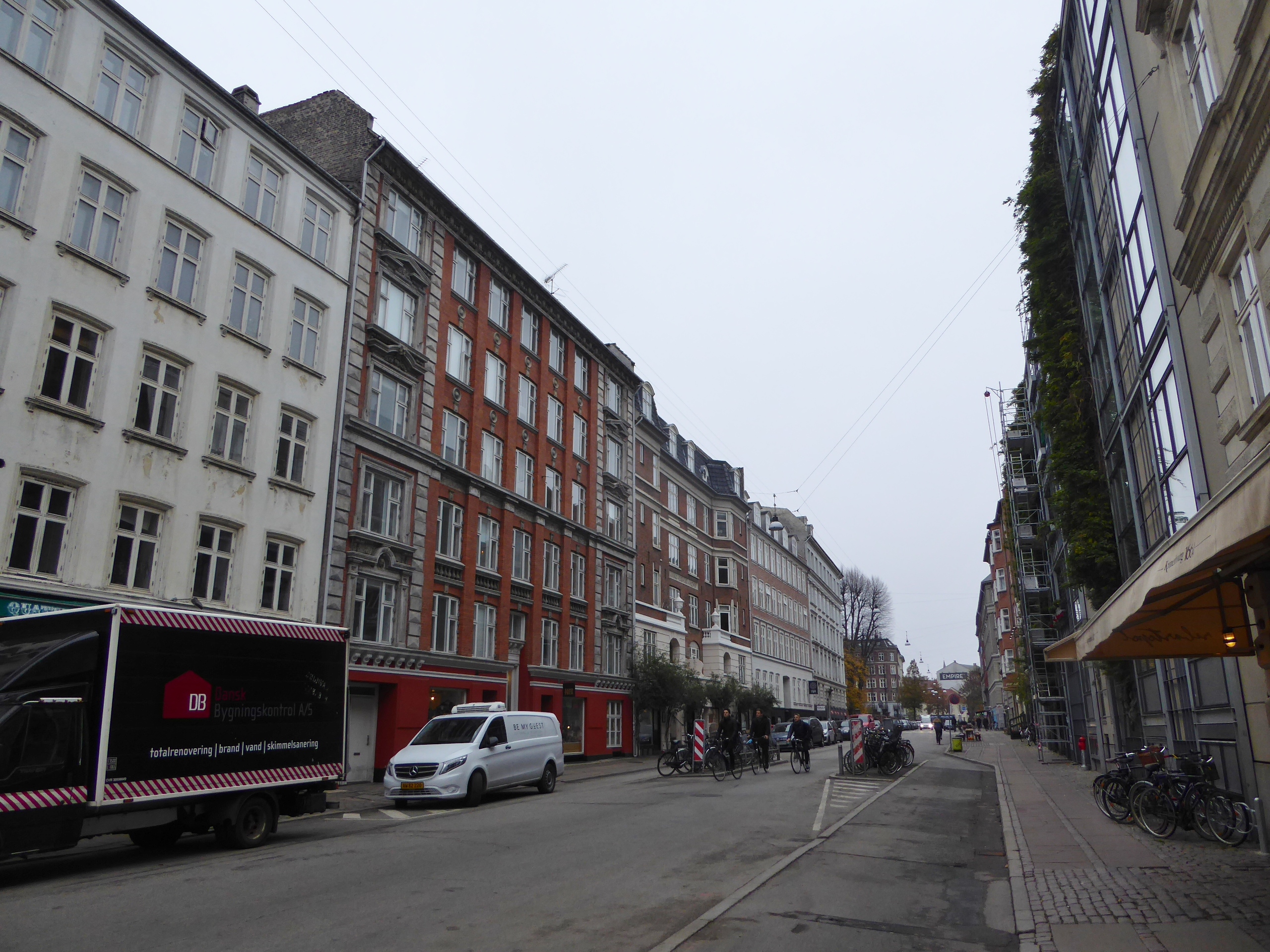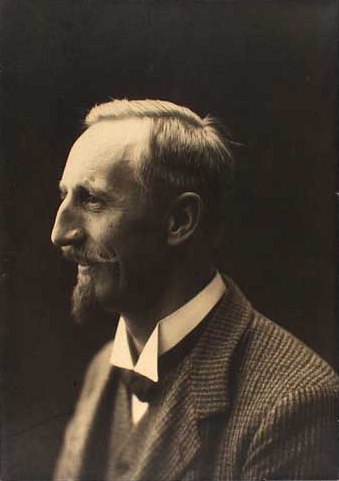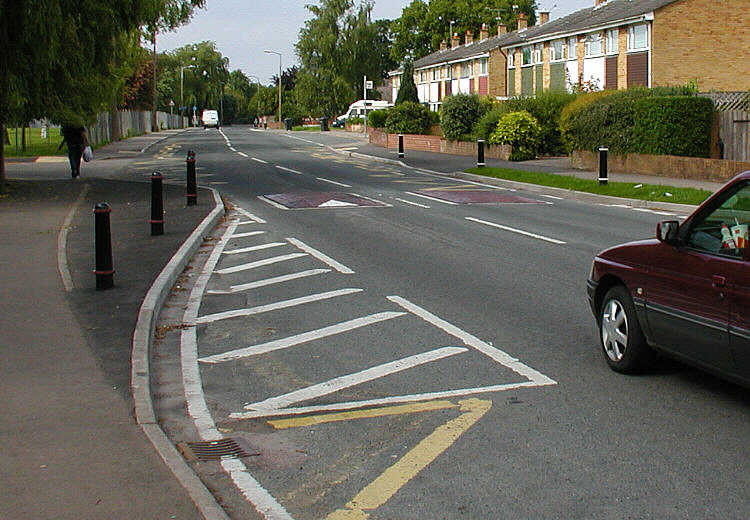|
Guldbergsgade
Guldbergsgade is a street in the Nørrebro district of Copenhagen, Denmark. It follows a clockwise curve from Sankt Hans Torv in the south to Tagensvej in the north. The first part of the street passes the Jewish Northern Cemetery to the west and De Gamles By to the east. The public space Guldbergs Plads with a landscaped playground, is located close to its north end. History Guldbergsgade was originally called Barkmøllevej. The name referred to Garvernes Barkmølle ("The Tanners' Bark Mill") at Sankt Hans Torv, one of three windmills in the area. Another section of the road was called Lille Blegdamsvej ("Little Blegdamsvej"). The road received its current name in 1959. The name commemorates Frederik Høegh-Guldberg, a son of former Danish prime minister Ove Høegh-Guldberg, who built a house on the street in the beginning of the 19th century while he worked as a teacher at nearby Blaagaard Seminarium. Peter Fabersgade was also called Guldbergsgade until 1896. Notable buildi ... [...More Info...] [...Related Items...] OR: [Wikipedia] [Google] [Baidu] |
Guldbergsgade
Guldbergsgade is a street in the Nørrebro district of Copenhagen, Denmark. It follows a clockwise curve from Sankt Hans Torv in the south to Tagensvej in the north. The first part of the street passes the Jewish Northern Cemetery to the west and De Gamles By to the east. The public space Guldbergs Plads with a landscaped playground, is located close to its north end. History Guldbergsgade was originally called Barkmøllevej. The name referred to Garvernes Barkmølle ("The Tanners' Bark Mill") at Sankt Hans Torv, one of three windmills in the area. Another section of the road was called Lille Blegdamsvej ("Little Blegdamsvej"). The road received its current name in 1959. The name commemorates Frederik Høegh-Guldberg, a son of former Danish prime minister Ove Høegh-Guldberg, who built a house on the street in the beginning of the 19th century while he worked as a teacher at nearby Blaagaard Seminarium. Peter Fabersgade was also called Guldbergsgade until 1896. Notable buildi ... [...More Info...] [...Related Items...] OR: [Wikipedia] [Google] [Baidu] |
Guldbergsgade 01
Guldbergsgade is a street in the Nørrebro district of Copenhagen, Denmark. It follows a clockwise curve from Sankt Hans Torv in the south to Tagensvej in the north. The first part of the street passes the Jewish Northern Cemetery to the west and De Gamles By to the east. The public space Guldbergs Plads with a landscaped playground, is located close to its north end. History Guldbergsgade was originally called Barkmøllevej. The name referred to Garvernes Barkmølle ("The Tanners' Bark Mill") at Sankt Hans Torv, one of three windmills in the area. Another section of the road was called Lille Blegdamsvej ("Little Blegdamsvej"). The road received its current name in 1959. The name commemorates Frederik Høegh-Guldberg, a son of former Danish prime minister Ove Høegh-Guldberg, who built a house on the street in the beginning of the 19th century while he worked as a teacher at nearby Blaagaard Seminarium. Peter Fabersgade was also called Guldbergsgade until 1896. Notable buildi ... [...More Info...] [...Related Items...] OR: [Wikipedia] [Google] [Baidu] |
Sankt Hans Torv
Sankt Hans Torv ( lit. "St. John's Marketplace") is a public square in the heart of the Nørrebro district of Copenhagen, Denmark. It is dominated by a large granite sculpture by Jørgen Haugen Sørensen and is known for its thriving café scene. St. John's Church, the largest and oldest church in Nørrebro, is situated just east of the square. Located close to the major shopping street Nørrebrogade and The Lakes, the square is a major junction in the area where the streets Blegdamsvej, Nørre Allé, Guldbergsgade, Elmegade, Fælledvej and Sankt Hans Gade meet. History The site used to be part of Blegedam Common, one of the commons which used to surround Copenhagen when it was a fortified city. The square is located at the site where the cows that grazed the Blegdam Common as well as the adjacent Northn and Eastern Commons gathered for milking. Its status as an important junction goes back a long time. Blegdamsvej is one of the oldest roads in the area and Nørre Allé was es ... [...More Info...] [...Related Items...] OR: [Wikipedia] [Google] [Baidu] |
KEA – Copenhagen School Of Design And Technology
KEA – Copenhagen School of Design and Technology (Danish: Københavns Erhvervsakademi, usually referred to as KEA), is a school of higher education in Copenhagen, Denmark. The academy is an independent self-owning institution subordinated to the Ministry of Science, Innovation and Higher Education. Degree programmes offered are mainly applied degrees, especially in design, technology and IT. The academy grants undergraduate and Professional degrees and has no graduate school. In addition to full-time studies the academy offers supplemental education, part-time programmes at bachelor's level and short-term courses for people who need to strengthen their qualifications. With 4,717 full-time students and 3,907 part-time students and about 350 employees as of 2015, the academy is one of the largest business academies in Denmark. Campus KEA currently consists of 8 different locations, most of which are concentrated in the districts of Nørrebro and North West. The main campus, KEA G ... [...More Info...] [...Related Items...] OR: [Wikipedia] [Google] [Baidu] |
Jewish Northern Cemetery (Copenhagen)
The Jewish Northern Cemetery in Nørrebro was formerly the principal Jewish cemetery in Copenhagen, Denmark. It has an area of 13,500 square metres and contains some 5,500 burials. History The Jewish congregation in Copenhagen purchased a 900 square metre site outside the city for use as a burial site in the early 1690s. The oldest burial in the cemetery is from 1694. Further acquisitions of land had brought the cemetery up to its current size by 1854 but it was still passed out of use when a new Jewish cemetery opened in connection with the new Vestre Cemetery. Today The brick wall which today surrounds the cemetery on three sides, along Møllegade, Guldbergsgade and Birkegade, was built in 1873 to a design by Vilhelm Tvede. The entrance is on Møllegade. The cemetery was listed in 1983. Burials * David Baruch Adler, broker * Hanna Adler, educator * Joel Ballin, engraver * Samuel Jacob Ballin, physician * Sophus Berendsen, industrialist * Herman Bing, book dealer * Ja ... [...More Info...] [...Related Items...] OR: [Wikipedia] [Google] [Baidu] |
Axel Preisler
Axel Preisler(12 May 1871 – 25 September 1930) was a Danish architect. History Preisler was born in Odense where his father was a merchant. He completed a carpenter's apprenticeship in his home town and studied at Odense Technical College before enrolling at the Royal Danish Academy of Fine Arts' school of architecture in Copenhagen in 1890. He worked as an assistant in the architectural practices of Valdemar Ingemann, Vilhelm Dahlerup and Heinrich Wenck propr to his graduation in 1899. He was represented at Charlottenborg Spring Exhibition in 1918, 1921 and 1922. He was also active in the Architects' Association of Denmark, Architects' Association and was its chairman in 1930. Selected works * Værnedamsvej 4 B, Copenhagen (1897–98) * Warehouse, Prinsessegade/Bodenhoffs Plads, Christianshavn, Copenhagen (1898–99, demolished) * Ulrichsens Stiftelse (rear wing), Wesselsgade 12 A, Copenhagen (1901) * Apartment building, Ahlmanns Allé 15A/Søbøtkers Allé, Hellerup (1903) * ... [...More Info...] [...Related Items...] OR: [Wikipedia] [Google] [Baidu] |
CEBRA
CEBRA is a Danish architectural office founded in 2001 by the architects Mikkel Frost, Carsten Primdahl and Kolja Nielsen. Based in Aarhus in Denmark and in Abu Dhabi in the UAE, CEBRA employs a multidisciplinary international staff of 50. In February 2017 the CEBRA-designed Experimentarium was inaugurated, a science center in Hellerup, near Copenhagen. In 2013 The Iceberg, a multiple prize-winning housing project, was built in the revitalized harbour area in Aarhus, Denmark. One of the founding partners, Mikkel Frost, often paints in watercolours cartoonish concepts of some of CEBRA's projects and the whole collection is name"Toons" In autumn 2016 two of these watercolours have been acquired by the Museum for Architectural Drawing in Berlin, Germany. They are now part of the collection among works by Zaha Hadid, Frank Lloyd Wright, Aldo Rossi, Frank Gehry. Most of CEBRA's projects are within the fields of education, culture and housing. Selected awards CEBRA has received a n ... [...More Info...] [...Related Items...] OR: [Wikipedia] [Google] [Baidu] |
Traffic Calming
Traffic calming uses physical design and other measures to improve safety for motorists, pedestrians and bicycle-friendly, cyclists. It has become a tool to combat speeding and other unsafe behaviours of drivers in the neighbourhoods. It aims to encourage safer, more responsible driving and potentially reduce traffic flow. Urban planners and Traffic engineering (transportation), traffic engineers have many strategies for traffic calming, including narrowed roads and speed humps. Such measures are common in Australia and Europe (especially Northern Europe), but less so in North America. Traffic calming is a calque (literal translation) of the German word ''Verkehrsberuhigung'' – the term's first published use in English was in 1985 by Carmen Hass-Klau. History In its early development in the UK in the 1930s, traffic calming was based on the idea that residential areas should be protected from through-traffic. Subsequently, it became valued for its ability to improve pedest ... [...More Info...] [...Related Items...] OR: [Wikipedia] [Google] [Baidu] |
Sense Of Place
The term sense of place has been used in many different ways. It is a multidimensional, complex construct used to characterize the relationship between people and spatial settings. It is a characteristic that some geographic places have and some do not, while to others it is a feeling or perception held by people (not by the place itself). It is often used in relation to those characteristics that make a place special or unique, as well as to those that foster a sense of authentic human attachment and belonging. Others, such as geographer Yi-Fu Tuan, have pointed to senses of place that are not "positive," such as fear. Some students and educators engage in " place-based education" in order to improve their "sense(s) of place," as well as to use various aspects of place as educational tools in general. The term is used in urban and rural studies in relation to place-making and place-attachment of communities to their environment or homeland. The term sense of place is used to des ... [...More Info...] [...Related Items...] OR: [Wikipedia] [Google] [Baidu] |
Christian Puglisi
Christians () are people who follow or adhere to Christianity, a monotheistic Abrahamic religion based on the life and teachings of Jesus Christ. The words ''Christ'' and ''Christian'' derive from the Koine Greek title ''Christós'' (Χριστός), a translation of the Biblical Hebrew term '' mashiach'' (מָשִׁיחַ) (usually rendered as ''messiah'' in English). While there are diverse interpretations of Christianity which sometimes conflict, they are united in believing that Jesus has a unique significance. The term ''Christian'' used as an adjective is descriptive of anything associated with Christianity or Christian churches, or in a proverbial sense "all that is noble, and good, and Christ-like." It does not have a meaning of 'of Christ' or 'related or pertaining to Christ'. According to a 2011 Pew Research Center survey, there were 2.2 billion Christians around the world in 2010, up from about 600 million in 1910. Today, about 37% of all Christians live in the Ame ... [...More Info...] [...Related Items...] OR: [Wikipedia] [Google] [Baidu] |
Ove Høegh-Guldberg
Ove Høegh-Guldberg (born ''Guldberg''; 1 September 1731 – 7 February 1808) was a Danish statesman, historian, and ''de facto'' prime minister of Denmark during the reign of the mentally unstable King Christian VII. Biography Guldberg was born at Horsens in Jutland, Denmark. He was the son of Jørgen Pedersen Høg (1683-1751) and Helene Dorthea Ovesdatter Guldberg (c. 1697-1742). With the support of his maternal uncle Dines Guldberg, a priest in Gylling, he was educated as a theologian; he earned a theology degree in 1753. Later he became a historian and in 1761 a professor at Sorø Academy. Like many other middle class academics of his age, he was a mixture of patriotic pragmatist and orthodox royalist. In 1764 he was connected to Queen Juliana Maria as the house teacher of her son, Hereditary Prince Frederick, and in 1771 he became the latter's cabinet secretary. In his new position, his national and conservative views influenced the prince, and the appoin ... [...More Info...] [...Related Items...] OR: [Wikipedia] [Google] [Baidu] |





